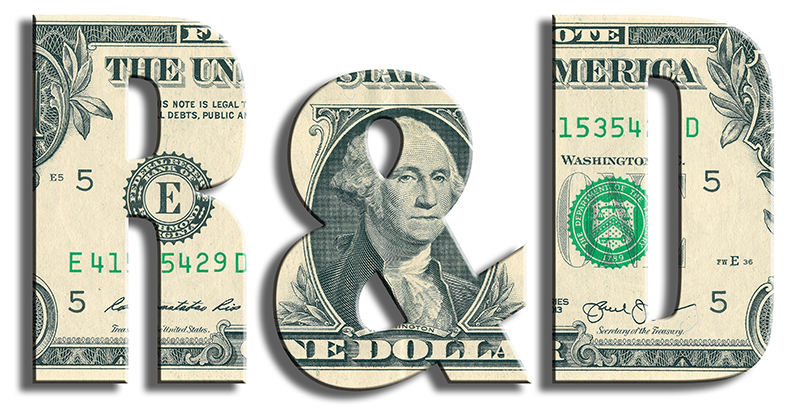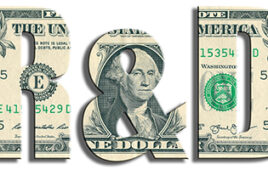 The R&D World Index (RDWI) for the week ending November 18, 2022, closed at 2,400.78 for the 25 companies in the RDWI. The Index was up 1.87% (or 44.12 basis points) from the week ending November 11, 2022. Sixteen of the 25 RDWI members gained value during the past week from 0.40% (Stellantis NV) to 13.72% (Alibaba). Nine of the 25 RDWI members lost value last week from -0.05% (Toyota) to -7.17% (Roche Holdings AG).
The R&D World Index (RDWI) for the week ending November 18, 2022, closed at 2,400.78 for the 25 companies in the RDWI. The Index was up 1.87% (or 44.12 basis points) from the week ending November 11, 2022. Sixteen of the 25 RDWI members gained value during the past week from 0.40% (Stellantis NV) to 13.72% (Alibaba). Nine of the 25 RDWI members lost value last week from -0.05% (Toyota) to -7.17% (Roche Holdings AG).
The U.S. State Department announced last week that the wait times for tourist, student, and work visas will shorten significantly in 2023 as the department ramps up processing to meet the rising demand for entry into the U.S. The closing of global U.S. consulates two years ago necessitated by the COVID-19 pandemic has mostly rebounded to pre-pandemic levels, but business groups, Silicon Valley companies, universities, and hospitals have voiced their displeasure at the current state of visa approval times. This includes those groups looking for R&D support from foreign academics and researchers. It’s anticipated that the immigration department will look to technical innovations to improve their visa procedures.
China’s electric vehicle (EV) maker BeyonCa, Beijing, announced last week that it plans to establish an R&D hub in Singapore, which will add to its three existing R&D offices in China and a design center in Munich, Germany, which has a strong artificial intelligence (AI) staffing. The startup, which was founded by former Volkswagen AG executives, expects to produce its first mass-produced EV in 2024.
Global energy giant Enel Spa, Rome, announced last week that it is readying a large solar manufacturing push in the U.S., including plans for a factory that will make solar cells. The U.S. factory will initially produce 3 GW, and ultimately 6 GW, of solar panels. The investment is expected to be close to $1 billion. This announcement is the latest to follow on from the build-up for renewable energy systems created by the U.S. Inflation Reduction Act passed in August. Solar power is popular in the U.S., which has been adding about 20 GW of solar capacity annually to the U.S. electricity grid system. Enel expects to increase the current U.S solar capacity by 75% by 2024.
RDW Index member Roche Holding AG, Basel Switzerland, announced last week that its experimental Alzheimer’s drug, gantenerumab, had failed to significantly slow cognitive decline in long-term clinical trials. The trials lasted more than two years and involved about 2,000 participants. In one trial, the drug reduced cognitive decline by 8% and in another the reduction was 6%. Neither result passed the threshold for statistical significance established by the company.
Micron Technology Inc., Lehi, Utah, announced last week that it is scaling back its production of silicon wafers used for electronic memory devices by about 20% in response to softening demand in the industry. The reduction will start in the next manufacturing quarter. The company is working on further reductions in capital expenses as the overall 2023 economic outlook continues to weaken.
Warren Buffett’s Berkshire Hathaway Inc., Omaha, Nebraska, announced last week that it is investing roughly $4.1 billion in Taiwan Semiconductor Manufacturing Co. (TSMC), Hsinchu, Taiwan, despite the recent spate of sour economic news in the chip industry. TSMC is the largest contract manufacturer of semiconductor devices. Chip analysts and executives remain optimistic about the long-term demand for these products. Buffett’s investment also stands to benefit from any potential cooling of tensions between the U.S. and China, which is a large purchaser of these devices.
A report in last week’s Wall Street Journal noted that several car manufacturers plan to deploy lithium-iron-phosphate (LFP) batteries (used widely in China), which cost less than the nickel-and-cobalt combination used widely in the U.S. and Europe. LFP batteries have less energy density and thus have poorer performance than nickel-cobalt batteries. LFP batteries cost about 30% less than nickel-cobalt batteries and don’t suffer from the supply issues inherent in nickel-cobalt devices. LFP batteries are expected to account for about 40% of the EV market by 2030.
The United Kingdom (U.K.) annual rate of inflation rose to a 41-year high of 11.1% in October according to the U.K.’s Office for National Statistics. The increase was noted as being due to surging energy prices. The October inflation rate increased from 10.1% in September. Inflation picked up in other parts of Europe as well, with 11.6% in Germany.
The U.S. inflation rate eased to 7.7% in October from 8.2% in September. The U.K. government expects their inflation rate to be flat for the next three months.
RDW Index member General Motors Co., Detroit, announced last week that it expects to be “solidly profitable” in EVs sold in North America by 2025. This is due largely to new federal subsidies offered as part of the recently passed U.S. climate legislation. The combination of government incentives for U.S. battery-making facilities and revisions in the EV tax credit for buyers will help boost GM’s margins in the coming years. GM also expects to improve profitability on their EV models by bringing down battery costs and cutting about $2,000 off each vehicle through dealer revisions. GM says they expect to cut battery-cell costs to $87/kWh by 2025 and then down to $70/kWh by 2030.
The government of Taiwan proposed last week to increase its tax breaks for technology companies’ R&D expenses from the current 15% to 25% to retain its leadership position in semiconductor manufacturing as other countries offer billions to bolster their chip industries. The Taiwan tax amendment requires parliamentary approval to be passed into law, which the government hopes will take effect from January 1, 2023.
R&D World’s R&D Index is a weekly stock market summary of the top international companies involved in R&D. The top 25 industrial R&D spenders in 2020 were selected based on the latest listings from Schonfeld & Associates’ June 2020 R&D Ratios & Budgets. These 25 companies include pharmaceutical (10 companies), automotive (6 companies) and ICT (9 companies) who invested a cumulative total of nearly 260 billion dollars in R&D in 2019, or approximately 10% of all the R&D spent in the world by government, industries and academia combined, according to R&D World’s 2021 Global R&D Funding Forecast. The stock prices used in the R&D World Index are tabulated from NASDAQ, NYSE, and OTC common stock prices for the companies selected at the close of stock trading business on the Friday preceding the online publication of the R&D World Index



Tell Us What You Think!